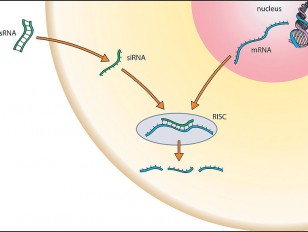RNAi and development in C. elegans

Presenter: Craig Mello
Published: July 2014
Age: 18-22 and upwards
Views: 2667 views
Tags: Argonaute;protein;RNA;RNAi;elegans;gene;genetic
Type: Lectures
Source/institution: Lindau-Nobel
Watch now
Argonaute proteins interact with small RNAs to mediate gene silencing. C. elegans contains 27 Argonaute homologs, raising the question of what roles these genes play in RNAi and related gene-silencing pathways. Through our collaborator, Dr. Shohei Mitani, we have obtained a set of 30 deletion alleles representing all of the previously uncharacterized Argonaute genes. Analysis of single- and multiple-Argonaute mutant strains reveals essential functions in several pathways including: (i) chromosome segregation, (ii) fertility, and (iii) at least two separate steps in the RNAi pathway. We show that RDE-1 interacts with trigger-derived sense and antisense RNAs to initiate RNAi, while several other Argonaute proteins interact with amplified antisense siRNAs to mediate downstream silencing. Overexpression of downstream Argonautes enhances silencing, suggesting that these proteins are limiting for RNAi. These downstream Argonautes also function in endogenous RNAi (endo-RNAi) pathways of unknown function. A distinct Argonaute, ERGO-1, appears to function in a manner analogous to RDE-1 at an upstream step in the endo-RNAi pathway. The ERGO-1 and RDE-1 mediated pathways appear to compete for the downstream secondary Argonautes which lack key residues required for mRNA cleavage. Thus our findings support a two-step model for RNAi, in which Argonaute proteins function sequentially, and downstream silencing is mediated by a set of Argonautes unlikely to harbor catalytic-slicer activity.




